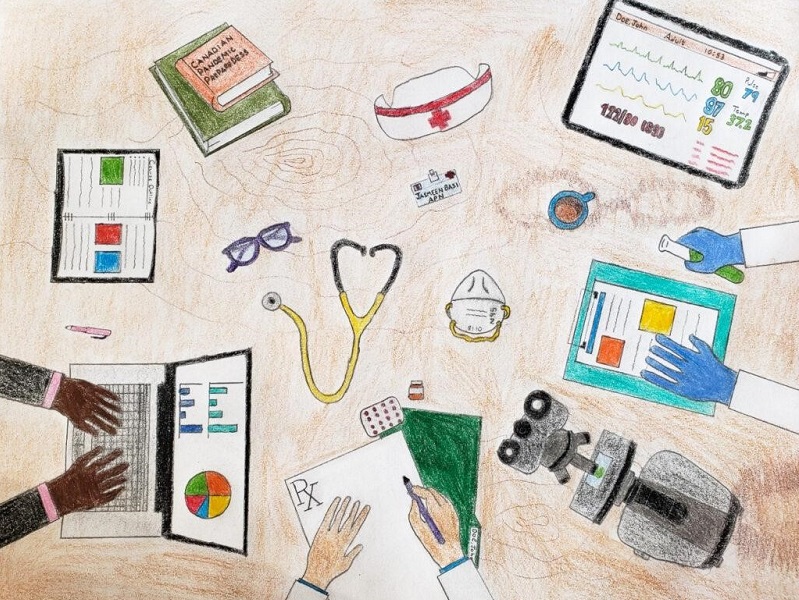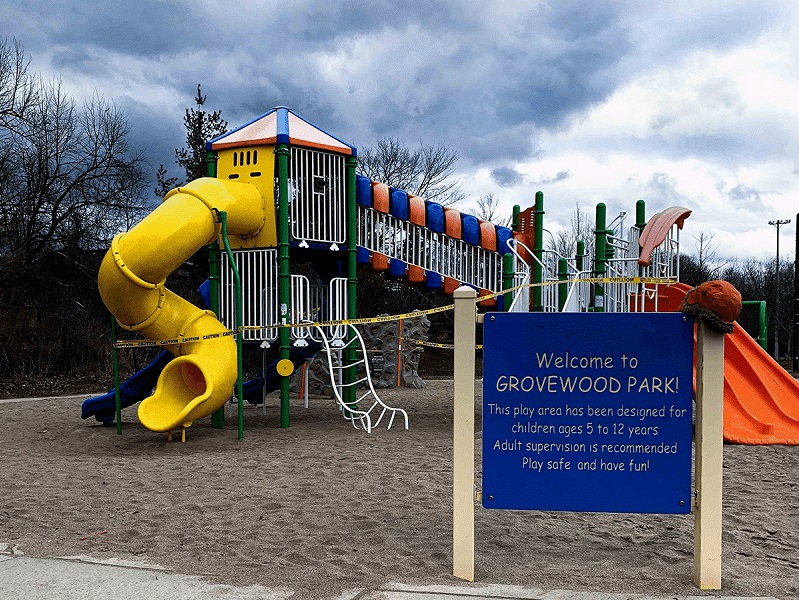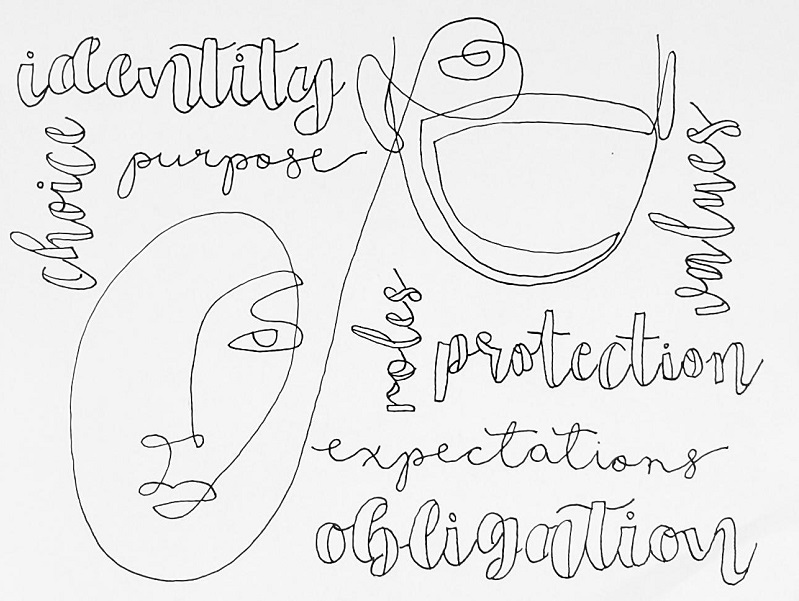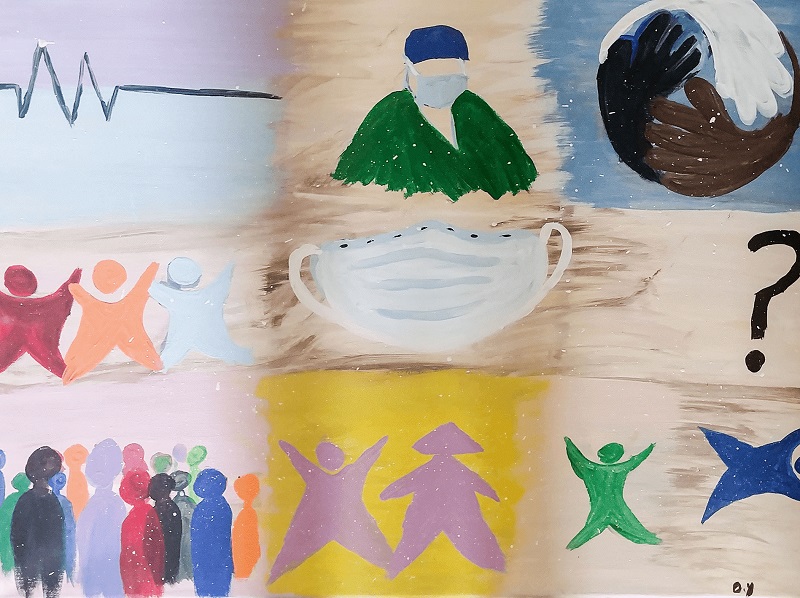Creating and inspiring an aesthetic narrative of the first wave of the pandemic
The first wave of the COVID-19 pandemic was a time of uncertainty and devastation for students. What began as a two-week shutdown became an indeterminate lockdown: residences were closed, emergency bursaries were created, classes moved online, and many experiential learning placements were put on hold.
Sherry Espin has been a professor of nursing at the Daphne Cockwell School of Nursing (DCSN) for over 15 years. She remembers how, early in the COVID-19 pandemic, teaching pivoted to virtual, which impacted nursing students who were also frontline nurses. These students were practicing nurses in the process of advancing their degrees in the undergraduate or graduate program. While shifting to online learning, they were providing direct care to patients with COVID-19 in a variety of health care settings.
Creative expression
Espin and research collaborators, Karen LeGrow, Don Rose, Sue Bookey-Bassett, and Elaine Santa Mina wanted to understand the impact of the pandemic on nursing students. The result is Aesthetic Reflections (external link, opens in new window) - a series of creative reflections from nursing students in that moment. Their analysis is published in the Canadian Journal of Nursing Research. (external link, opens in new window)
In developing the research methodology, the team took a unique approach. “We asked participants to respond to a series of reflective questions around this experience of canceled placements, moving to online learning, while still working as nurses,” explained Espin. “We engaged them in an opportunity to develop or provide an aesthetic piece, something creative, that elucidated their feelings and experiences of this dual role. We encouraged students to use any modality that resonated with them. Students provided poetry, music, paintings and drawings.”
Four key themes
In analyzing the narrative responses, the research team identified four key themes. “Firstly, participants described a ‘call to duty’ in response to the pandemic, an obligation to make a difference,” explained Espin “Secondly, nurses spoke about a myriad of emotions from fear and exhaustion to pride and gratitude. There was an extensive range of feelings involved in the reflections and art pieces submitted. Thirdly, participants described a shift in societal and individual perceptions of nursing. They felt there was an increase in recognition of nurses' contributions to society and the pandemic and that this was reflected broadly in the media. Lastly, the students as nurses spoke about learning in an uncertain environment and how COVID-19 impacted their student experience. Nurses learn in clinical placements, many of which were canceled along with in-person classes, and which they described as a hindrance to their academic performance. Participants described that they valued and appreciated having faculty provide choices and options.”
Encouraging creative, critical thinking
“The published creative pieces are quite powerful,” said Espin. “Many faculty members have asked us how we encouraged students to take what we call ‘aesthetic risk.’” Creating and sharing their creative work can be daunting and intimidating. The creativity and personal nature of these pieces make them compelling to the viewer and challenging to produce. The team developed a series of five YouTube videos that were instrumental in encouraging students to engage creatively and produce aesthetic pieces for this project. These videos were helpful in the context of the research but could also be used in any classroom to support students in the development of creative work.
Espin and team also recently published “Using Critical Creativity to Support Virtual Methods of Critical Reflection for Undergraduate and Graduate Nursing Students (external link, opens in new window) ” in Vol 12, No 8 of Journal of Nursing Education and Practice, about the development and use of these videos.
Espin and colleagues from the DCSN Karen LeGrow, Don Rose, Sue Bookey-Bassett, Elaine Santa Mina, and PhD student Alyssa Indar also worked with Taylor MacLean of the Centre for Communicating Knowledge (CCK), a knowledge mobilization service unit in the Creative School to document the students' experiences of being both a student and practicing nurse during the first wave of the COVID-19 pandemic. Espin and team received funding for this work from the Faculty of Community Services, specifically the Rapid Response COVID-19 Team Grant.



